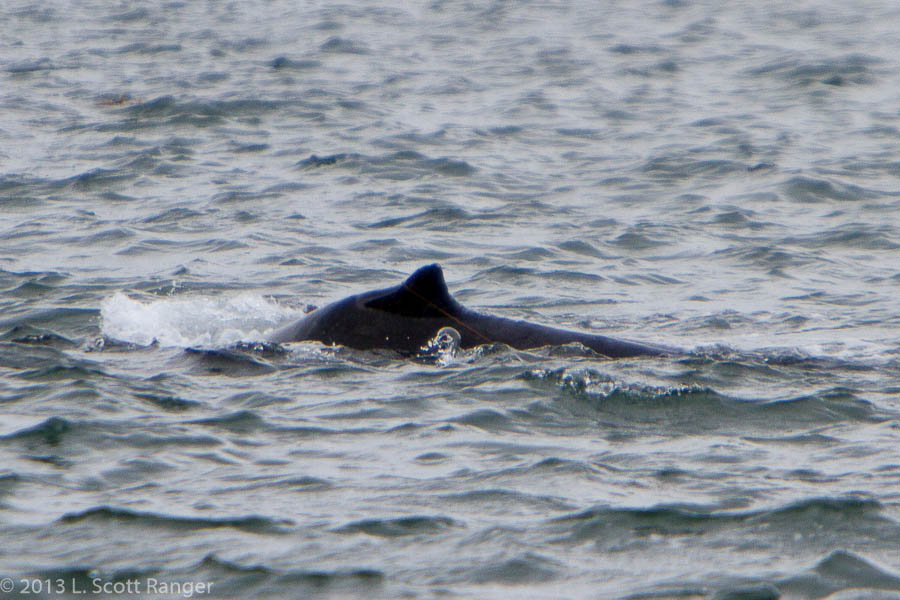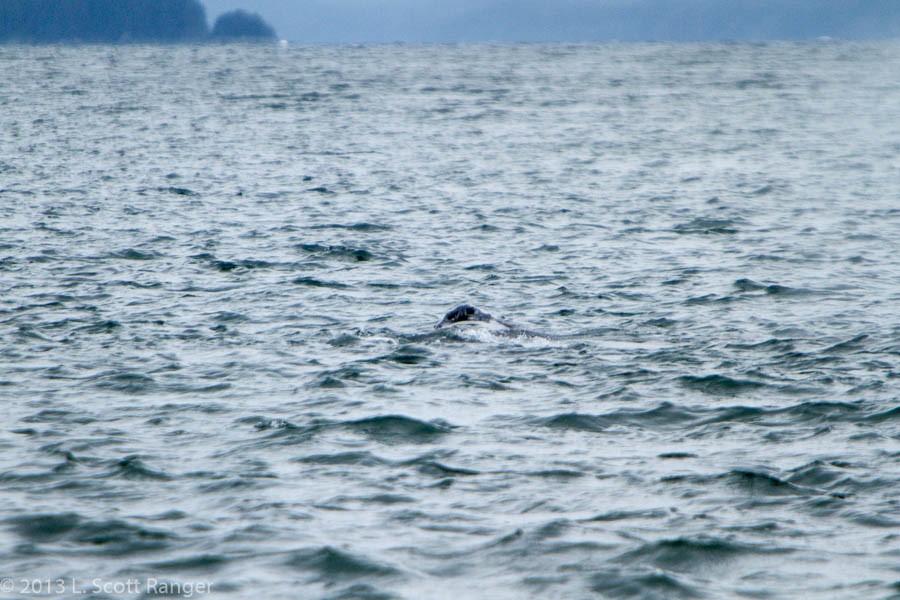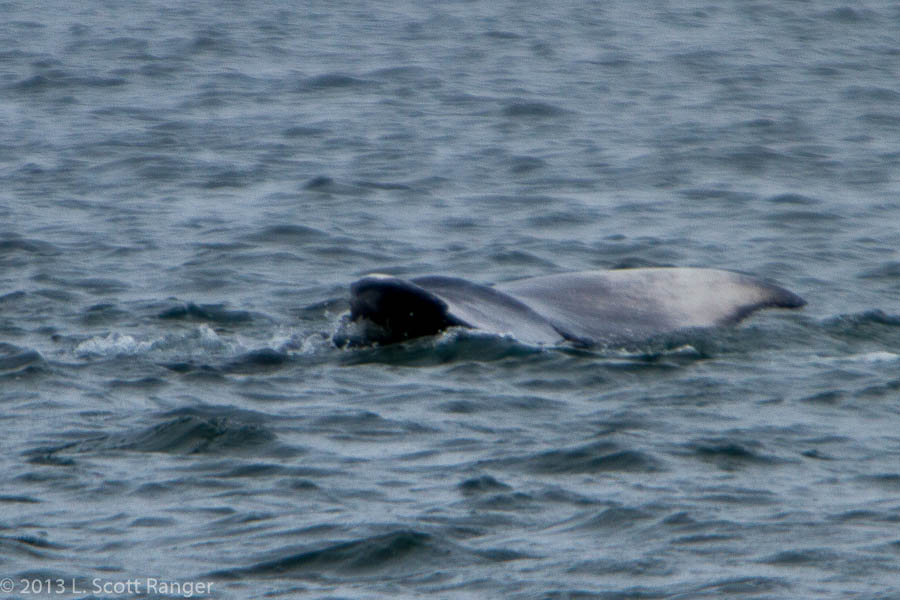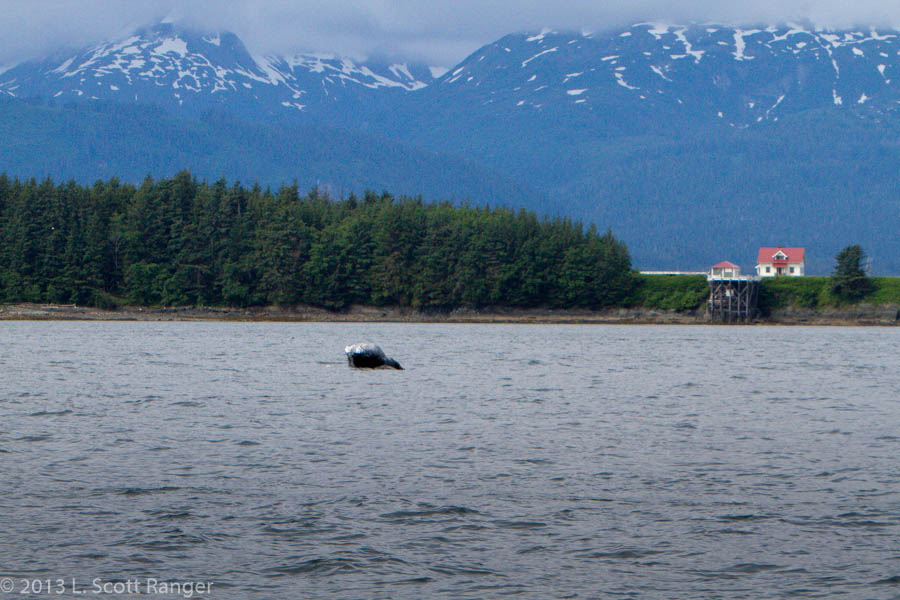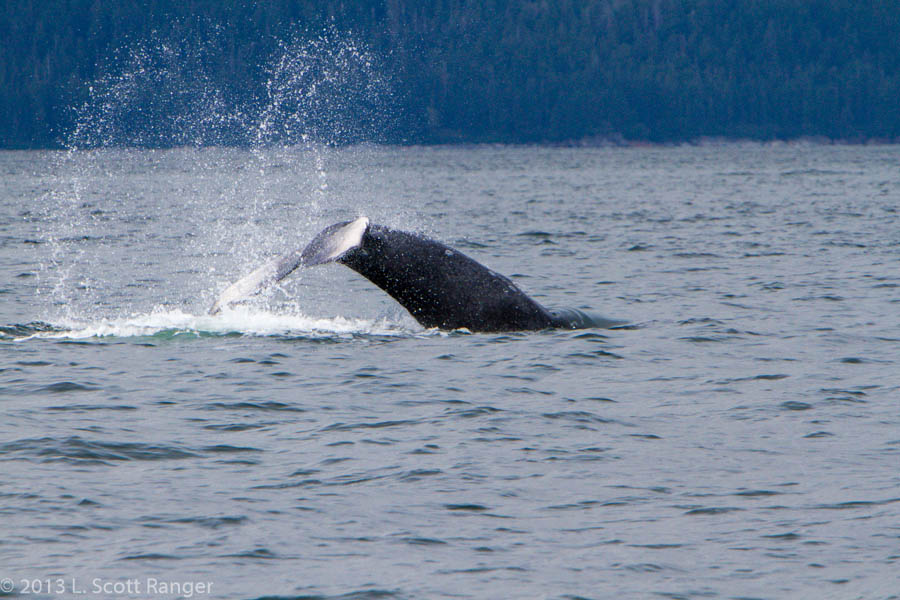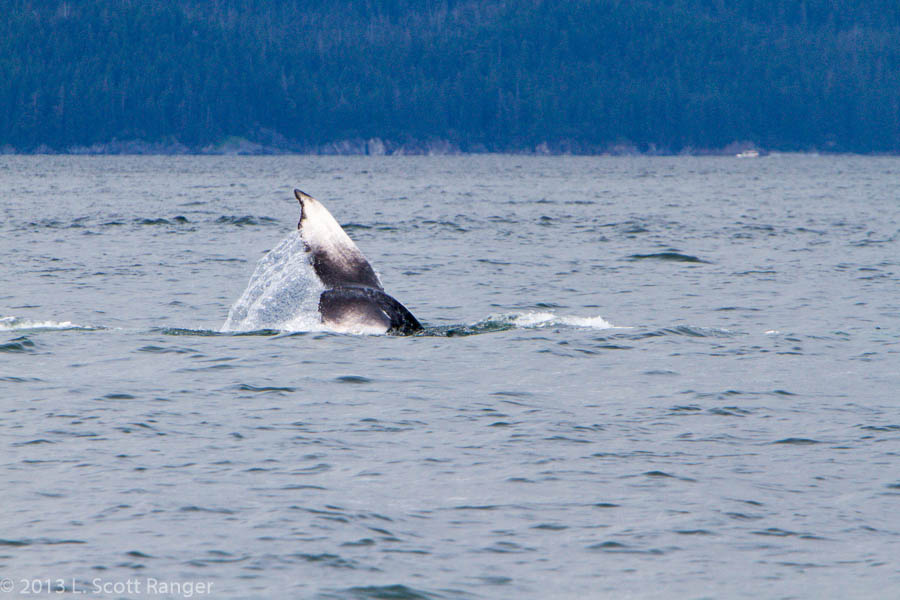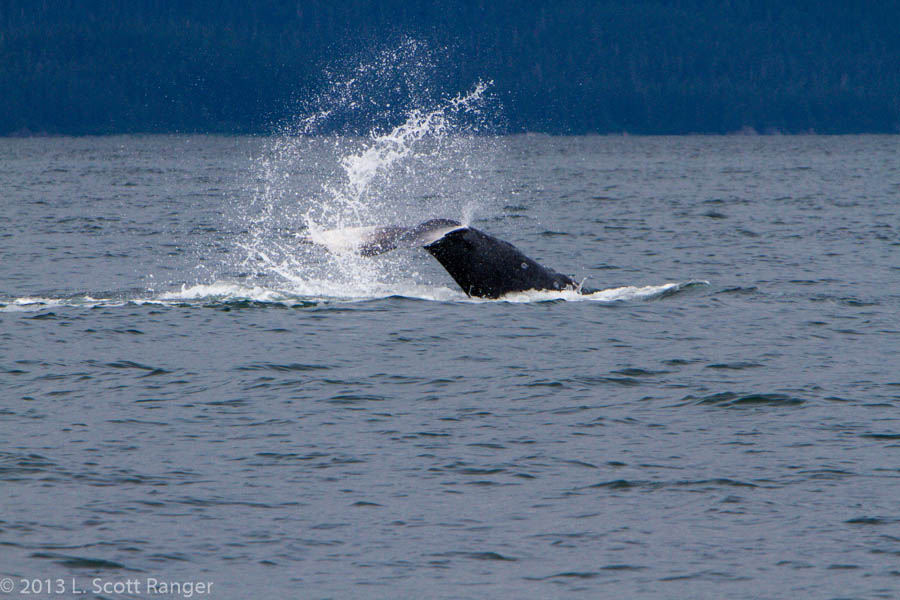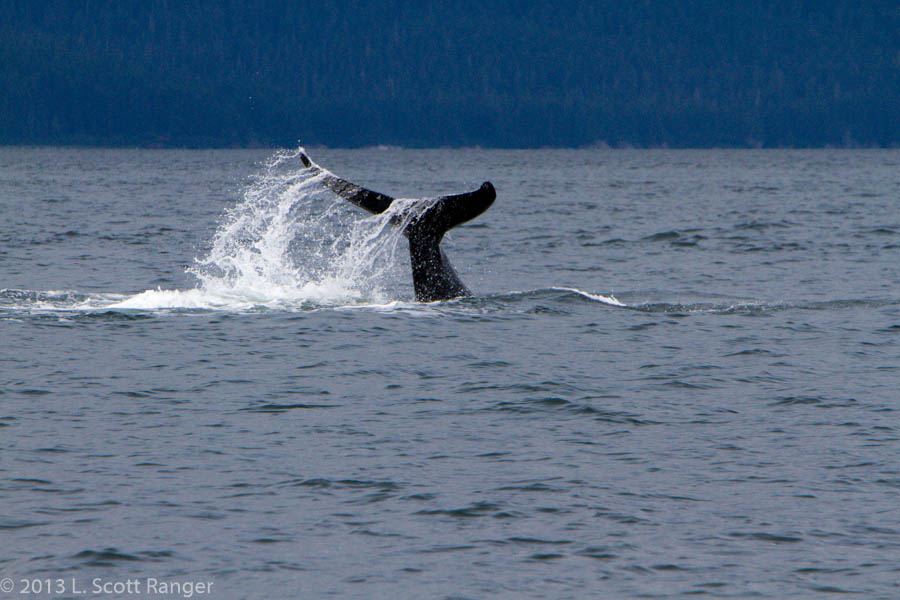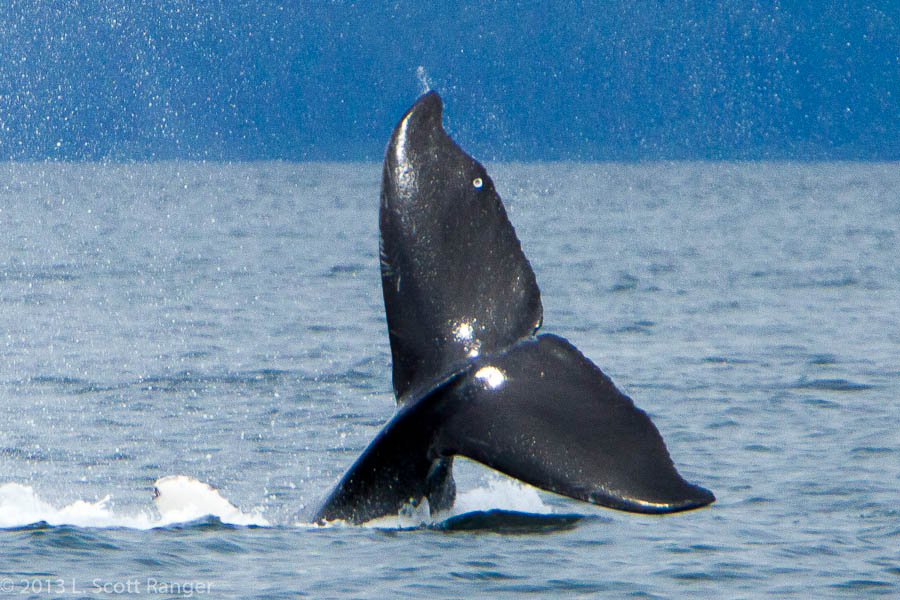1538 Calf 2013, Spark
I thought this was the first "baby tail" I shot on July 2, 2013 until Suzie Teerlink emailed me with Sasha's baby that she re-sighted on July 22, 2013. This is the my third definite identification of a cow and calf for 2013. When a cow and calf pair arrive here in April and May, the little ones only seem to know how to swim straight. After all, they just swam 3000 miles from Hawaii! When the pair gets here, mom is only interested in feeding. This means junior spends a great deal of time at the surface and, I'm sure, figuring out just what all those extra body parts (the pectoral fins) are good for. Diving isn't something they seem to know how to do instinctively and spend at least a couple of months learning how to do it as well as mom. Here, 1538's baby does a nice dive in exactly the right position for me to catch its ventral side for an identification shot that should stand for some time.
Usually all I see of the babies are the dorsal fins and blowholes like these two photos show of Flame's baby. This July 2, 2013 day was a pretty dark and dreary day in North Pass, but the little whale was pretty cooperative in showing body parts for me to photograph.
Here the baby is doing the "backstroke". On left is its right fluke and on the right is its left pectoral fin as the baby is floating on its back with the belly toward the surface. The flukes on the right are showing the ventral (belly) side so the little guy is still upside down.
On July 6, 2013 the calf proves to be frisky out in Saginaw Channel right at the Point Retreat Lighthouse. I interpret "frisky" behavior as the experimenting of youngsters as to what their body parts can do in helping them navigate their watery world. Here the calf does an ever so slight breach, just skirting the surface of the water. Then it does some backstroking with lots of pectoral slaps by doing barrel rolls, over and over again.
After doing the backstroke for a while, the calf decides to do some pretty serious tail slaps, all throwing its dorsal (back) side to the surface of the water for maximum splash. I'm presuming it is doing this in an attempt to strengthen the muscles that operate the flukes from the weak side. When the flukes hit the water, the peduncle (base of the spine at the tail) is rather tightly bent.
While doing its slaps, it note in this photo a very circular hole in the right fluke that appears to go all the way through. My first inclination is to think that this is the result of an encounter with an orca where one of the ice cream cone shaped and sized teeth made a good crunch on the fluke. I emailed this photo to Suzie Teerlink who responded that she's not sure what causes these holes and that it could be orca, but it is probably some other natural phenomenon that causes them.

